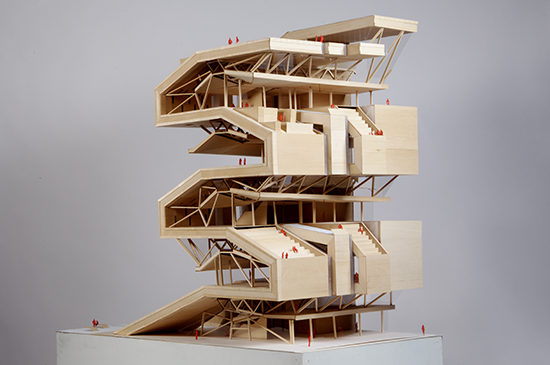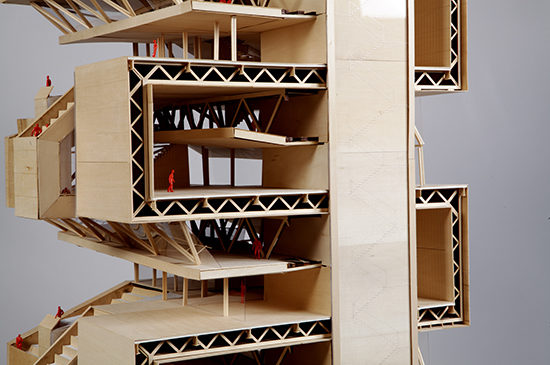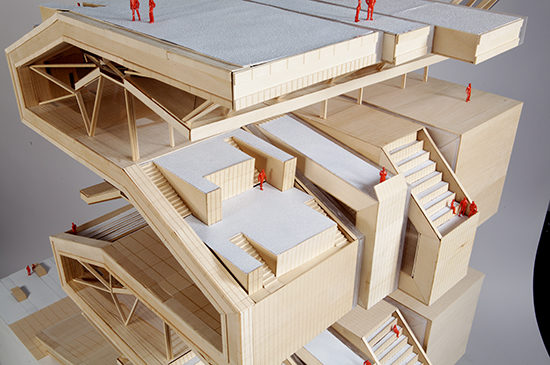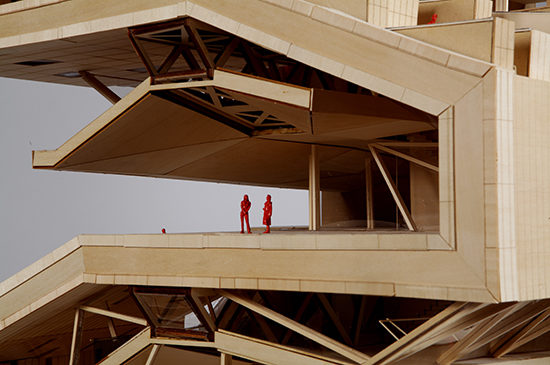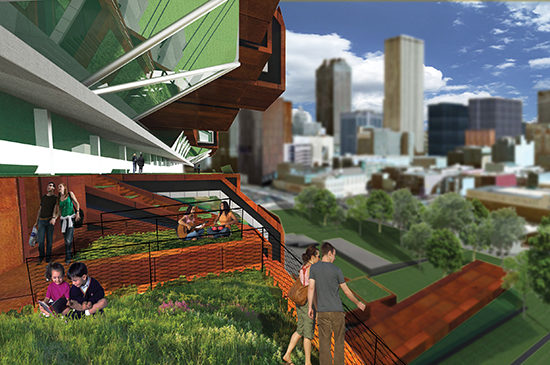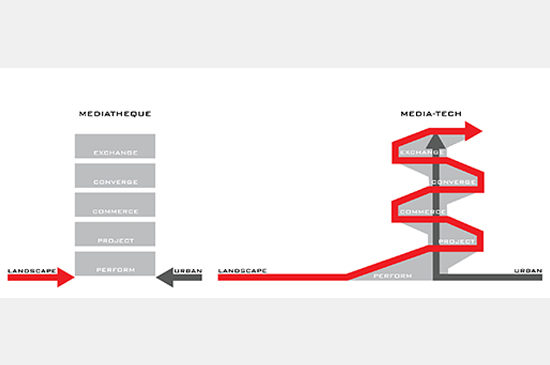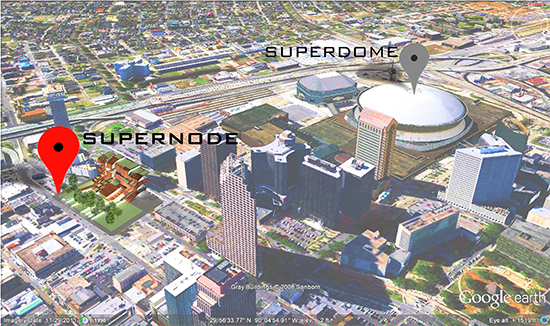
The SuperNODE project, designed by myself and my classmate Tyler Hopf as a project for the Design Development Comprehensive Studio for fourth year students at RPI, was featured this week in eVolo.
SuperNODE brings landscape up and into the building, intersecting with the extension of the urban environment.
Existing as a positive cultural icon, safe haven and playground, SuperNODE stimulates cultural vitality in post-Katrina New Orleans. This media-tech acts as a node of culture in the city, harboring communication and exchange through media and public assembly.
The sectional “string” warps and deforms as a reaction to the program of the building. This allows the structure to perform in a multi-scalar way, creating opportunities for concerts and rallies with thousands of people, performances in the auditorium for hundreds, and smaller gatherings in lecture halls, classrooms, and private reading spaces enabling information exchange at every scale.
Three urban conditions are established in the site and buildings: the public plaza, the public park, and the sidewalk. The plaza as an open space for gathering is established at the west side, continuing into the building’s interior. The public park continues up into the building on the east side creating a continuous flow with the context as well as smaller scale elevated terracing. The sidewalk condition is created on the mezzanine levels as an overflow space of program on the main floors and as a consistent connector flying through the shifting sections.
Program is defines in two axes, vertically through cultural character (perform, project, converge, commerce, exchange) and horizontally through the action within (observe, catalog, assemble, create, individualize).
The two sides of the “string” enhance the differentiation in program and multi-scalar functionality of the building by creating alternation pockets of space and distinguishing between two orientations of the building.
Project Team: Alex Dorn + Tyler Hopf at RPI
Project based off of the exhibition “Newer Orleans” displaying designs for safe-havens in post-Katrina New Orleans.


